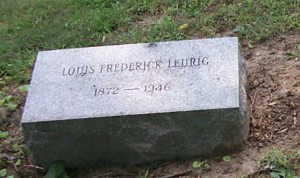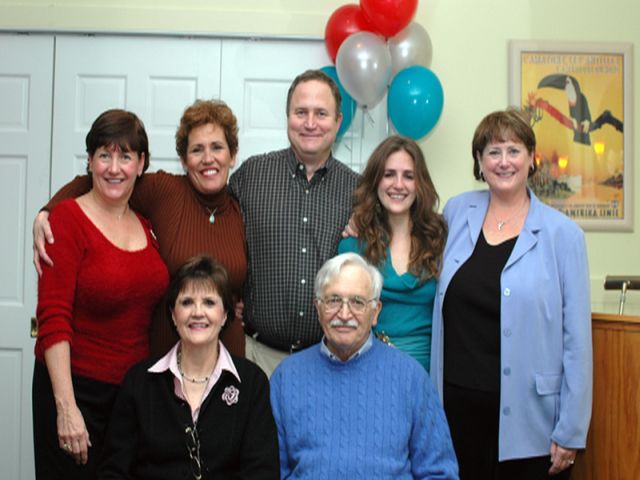In a previous blog “so many surnames to check – part 1” the discussion was how names of direct ancestors increase with each generation.
“Part 2” is why it is important to know about your past by understanding those individual persons with the surnames.
Why is that important? How does it affect me? The obvious and simple answer is because you should have an idea who is responsible for your being here. Plus knowing the characteristics you inherited. And, when looking back perhaps the past can help foretell your family future.
The past and those who were a part of it (ie. Surnames) often are used to describe your culture traditions (Irish, German and others), medical, migration, occupational and other history. Sometimes an individual invokes the past not realizing they referring to genealogy information. A person might say “I look like this because grandma had a thin face like I do”. Or comment “our family has always been Catholic”. Or, talking with a doctor, “there was heart disease in my mother’s side”. Or, during Saint Patrick’s Day, telling everyone we are Irish.
.
But are these comments correct?
Unless knowing and understanding those who lived in the past it is difficult to separate fact from fiction and family lore from true stories. The individuals in your surname chart have the answers somewhere in their history. Sometimes hidden because of lack of data but there to find, and other times just ignored or considered unimportant. But in spite of the several years and generations, they did have a life.
Your past is about individuals in your family.
Each individual has a story to tell. What they want is an audience so they are not forgotten! Similar to the question if a tree fell and no one was there to hear it did it make a noise; what if nothing is written or remembered about a person, did they really exist?
Of course they were there because we are here, but do they exist for us today in terms of having personality, features, traits, and characteristics normally thought of when describing a person we know.
“There are no uninteresting stories, only uninteresting story tellers”
Their stories include how and where they were born, immigrated, migrated from place to place, service in military or government or civic organizations that probably formed opinions and ideas, marriages and children, and how and where they left this life. Anyone who desires to know them better in order to related to their life and times will find it easier if the story is interesting.
Stories are important for understanding the role ancestors had in history, why they moved and changed locations, their religion affiliations, chronicling family life including marriages, divorces, and children, vocations, and how they contributed to communities. Then it is possible to put in context their world and relate to the world we know.
The usual genealogy basic information has facts, dates and places, but often does not tell the story. Basics include name, gender, birth date and place, married spouse name with marriage date and place, death and burial date and place, and perhaps divorce or residence. Of course the children and parents are needed to place the person in the correct generation sequence.
Basic information is valuable although sometimes difficult to find, and easily overlooked in the mass of data in libraries and personal possessions. To avoid being overwhelmed this information is often put in simple form almost like collecting names and dates is the objective rather than learning about the person.
Sometimes records or charts are abbreviated such as
“Louis Frederick Leurig 1872 – 1946”
as shown on his grave marker. Let’s consider him as an example of data and story.

These three facts are important, but what is more important is the question “what happened during the dash (-) between birth and death?”
Louis Frederick, my grandfather, is two generations back from me, and three generations for my children. I knew him until I was 15 so I have some personal stories and my father and mother told me other tales, history, events, and facts (or at least family lore and legend).
But compiling genealogy today after the three of them are gone, I have many unanswered questions that might only be found in historic documents, letters, photos, newspapers and research. I would have liked to have him tell me about the fire he put out when working as a night watchman, or what was discussed at his barber conventions, how he ran his barber shop, who may have sat in the waiting chair in his shop as we still have the chair, or more about his father and mother daily life, and many other questions. My descendants will probably have similar questions about me, so I try to build a timeline and biography for them to perhaps access. Or at least I hope some do!
Filling in the “dash”
Some researchers have already written parts of our ancestors lives. But often these leave out large parts of time and events due to lack of information or time to prepare documents. Researching my ancestors I feel an obligation or mission to at least record what I know and have found out about their lives between birth and death to fill in more information of what should be in the “dash”.
If I were to write stories with the possibility it might help someone today or in the future, then my obligation and mission will be accomplished. And with the hope someone, may, someday, help keep them from being among the lost and forgotten.
Besides preparing my own story, what about the example of “Louis Franklin Leurig 1872-1946”?
I will record my findings of learning more about him. Some facts and stories are partly known, but the story about Louis Frederick Leurig continues to be a work in progress so check back from time to time for more information.

I came across your web site today. I, like you, am interested in genealogies, especially the family of Sebastian Royer. My mother was a Stoner who derived from the Royer and Eby families. I have the Royer genealogy book published in 1926 by J.G. Francis, “History of the Royer family in America”. There is a lot of information on Sebastian Royer (Rheyer). It is available online too. Thank you for sharing information. I enjoy learning more about our early family. D. S.
Sorry for the long delay in answering your email about the Royer family mentioned on my leurigfamily website.
My wife and I have been going through medical issues of cancer and a severe fall on my part. However, everything is
working out well and I hope to be back with updates in the next few months.
Will write you again soon as am interested in your relationships. Louis Richard Leurig